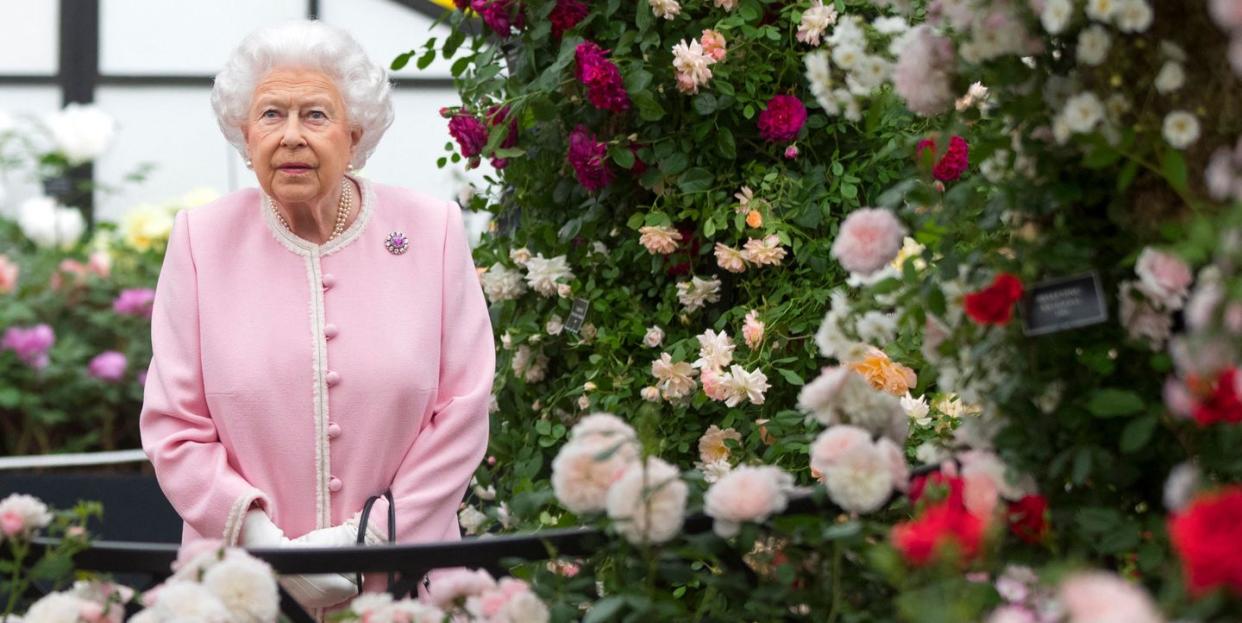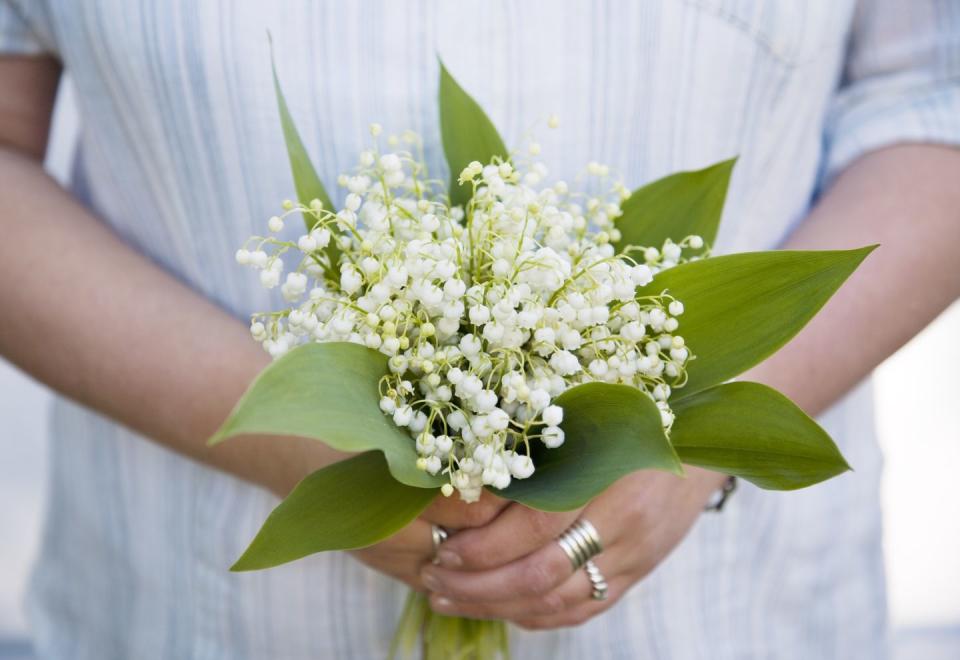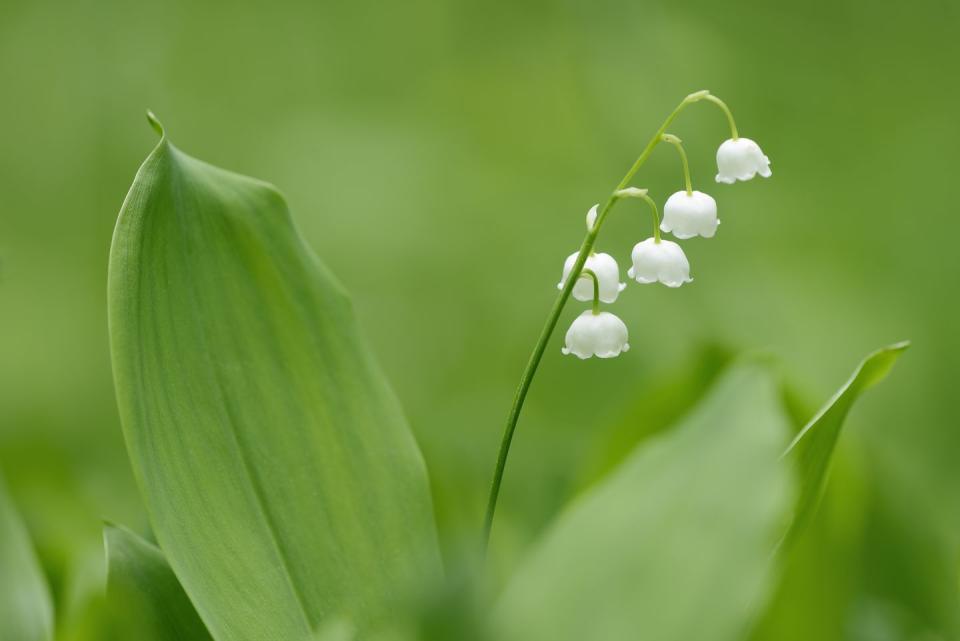The Special Meaning Behind Queen Elizabeth's Favorite Flower

With a fresh, green scent that practically embodies the arrival of spring and stems lined with small, delicate bell-shaped flowers practically made for small bouquets and nosegays, lily of the valley flowers have long been associated with royalty and are used as symbols of love, motherhood, and purity.
France's Charles IX began the tradition of giving lily of the valley flowers for luck every May Day, and the flower was part of Queen Elizabeth's coronation bouquet in 1953, Kate Middleton's bridal bouquet in 2010, and has been a regular part of the floral displays at Buckingham Palace for the entirety of Queen Elizabeth's reign. It was her favorite flower.
Here's everything you want to know about lily of the valley, including how to grow and keep it yourself.
What is special about the lily of the valley?
Lily of the valley is steeped in legend. Some believe the small flowers actually formed from Eve's tears as she left the Garden of Eden, and the flower is mentioned several times in the Bible (see below for more).
It's often seen at royal weddings, and not just in England. It's the national flower of Finland (and was the national flower of Yugoslavia), and in France, on May 1, for La Fête du Muguet, lilies are given to those you love as a symbol of luck and happiness. Perfume makers from Estée Lauder to Dior and more have used lily of the valley's unique scent in their perfumes. It's even the subject of a Queen song!

What do lilies of the valley represent?
Lily of the valley has represented different things across the centuries. In the Victorian era, it symbolized a return to happiness. In ancient times it was associated with humility and purity, as well as the goddess Ostara (from whose name we get our modern Easter). It's also been associated with the Greek god Apollo, who is said to have created it so his nymphs would have a soft carpet to walk on. In contemporary times it is associated with motherhood and happiness, but most formally with spring, especially May.
What birth month are lilies of the valley for?
Being the official flower of May, lily of the valley is also known as May lily, or May bells.
What kind of plant is lily of the valley?
Lily of the valley's scientific name is Convallaria majalis. It's a cool-weather woodland plant, native to Europe and northern parts of Asia, and is related to asparagus — though it is most definitely not edible. Being a perennial plant, it can last for years in woods or gardens where it becomes established, but it does not tolerate heat well and will often die if the weather is warm too long.
Lily of the valley blooms in low-growing bunches (about 6 to 12 inches high) and the blooms last for just 3 to 4 weeks in the late spring. Though native to Europe, it is considered an invasive species in North America.
What does the Bible say about lily of the valley flowers?
When the Bible refers to lilies, it's not talking specifically about Convallaria majalis. In fact, it's possible that the Bible is not even referring to more traditional types of lillies. Because flower names have changed so much over the years, and because different translations often compound confusion, it's difficult, if not impossible to know for certain which specific flowers are being referred to, and at one point "lily" was a name that simply meant a showy flower.
Convallaria majalis, in fact, was named lily of the valley at some point in the 16th or 17th century as a reference to Song of Solomon 2:1-2, which reads "I am a rose of Sharon, a lily of the valleys. / As a lily among brambles, so is my love among the young women." But that's not the only time the word lily appears in the Bible.
Matthew 6:28 has, perhaps, the most famous reference to lilies. It reads: "Consider the lilies of the field, how they grow / they toil not, neither do they spin." That same phrase, "lilies of the field" appears in Luke 12:27. The Songs of Solomon have a number of references to lilies. In 5:13 it reads: "His cheeks are like a bed of balsam, / Banks of sweet-scented herbs; / His lips are lilies / Dripping with liquid myrrh." In 4:5 it reads "Thy two breasts are like two young roes that are twins, which feed among the lilies." and in 7:2: "Thy navel is like a round goblet, which wanteth not liquor: thy belly is like an heap of wheat set about with lilies."

Are lilies of the valley poisonous?
Despite their reputation for both beauty and happiness, these are plants that would most definitely make you unhappy if you eat them. The plant contains a group of chemicals, called "glycosides" that affect the heart, making them dangerously poisonous to both people and pets. Children and small animals especially should stay away from the plant, especially its berries. Though they're safe to handle — not causing skin irritation — it's recommended that you wash hands throughly after touching them before eating or drinking anything.
What to know before planting lily of the valley flowers
As they originally grew on forest floors, lily of the valley plants love shade and will do well under trees or anywhere that doesn't get full sun. Once established they spread readily underground, through rhizomes, and in fact can be invasive. If you're worried about spread, consider growing them in pots or other containers, where they'll flourish without spreading. They like acidic to neutral soil and will do best in hardiness zones 3-7.
If growing them in the ground, be sure to dig up and divide the roots every few years. This will spark new growth and ensure plants continue to flower. Once established, lily of the valley make great ground cover and need very little in the way of care, as they don't suffer much from disease and don't need to be watered except in cases of drought.
You Might Also Like

